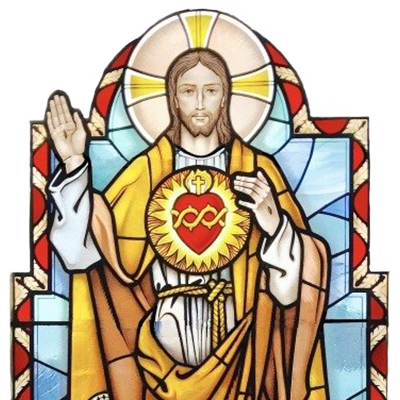Gaudete Sunday
Webmaster • December 12, 2020
The 3rd Sunday of Advent is known as ‘Gaudete Sunday.’ Here are four things to know and share . . .
1) Why is the third Sunday of Advent known as Gaudete Sunday?
Its name is taken from the entrance antiphon of the Mass, which is:
Rejoice in the Lord always; again I say, rejoice. Indeed, the Lord is near.
This is a quotation taken from Philippians 4:4-5, and in Latin, the first word of the antiphon is gaudete (Latin,
‘rejoice’; it's also pronounced with three syllables: gau-de-te)
2) What significance does this have?
Advent is the season of preparing for the arrival of the Lord Jesus (both his first coming and his second coming), and by the 3rd Sunday of Advent, we are most of the way through the season. Thus it is appropriate to rejoice
as we see the goal of the season approaching: “The Lord is near.”
3) What is the appropriate liturgical colour for this day?
According to the rubrics: In this Mass the colour violet or rose is used. It can thus be either one. It doesn’t have to be rose; it can also be violet.
4) What does the reading from Isaiah say?
It opens with a prophecy that the desert region will rejoice and sing and bloom with abundant flowers.
The reason is:
“They will see the glory of the Lord, the splendour of our God.”
It then contains the significant statement:
Then will the eyes of the blind be opened, the ears of the deaf be cleared; then will the lame leap like a stag, then the tongue of the mute will sing.
And it concludes:
Those whom the LORD has ransomed will return and enter Zion singing, crowned with everlasting joy; they will meet with joy and gladness, sorrow and mourning will flee.

After much waiting Fr D has now received the date of next year’s Confirmation which will take place on Saturday 9th May and will take place at St Joseph’s Church, Epsom. Possible candidates for Confirmation need to be presently in Year 10 at Secondary School and be regularly in attendance at our weekend and Holy Day Masses. Possible Candidates fulfilling these criteria are invited to write to Fr D telling him your name, address, mobile & tel. numbers, email address, who your parents are, which school you attend, where and when you were baptised, and why you would like to consider being confirmed. These letters should arrive at the Presbytery by 18.00 on Sunday 14th December
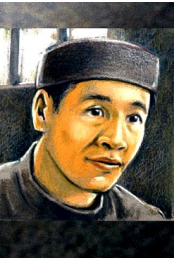
Andrew Dung-Lac, a convert ordained to the priesthood, was one of 117 martyred in Vietnam between 1820 and 1862. The Companion members of the group gave their lives for Christ between the 17th and 19th centuries, were beatified on four different occasions between 1900 and 1951, and were canonized during the papacy of St John Paul II. Christianity came to Vietnam through Portuguese Jesuits, who opened their first mission in 1615. Originally ministering to Japanese Catholics driven from Japan. Severe persecutions were launched at least three times in the 19th century. During the six decades after 1820 100,000 to 300,000 Catholics were killed or subjected to great hardship. Foreign missionaries martyred in the first wave included priests of the Paris Mission Society, and Spanish Dominican priests and tertiaries. In 1832, the Emperor banned all missionaries, trying to make the Vietnamese deny their faith. Much like the priest-holes in England during persecution, many hiding places were offered in homes of the faithful. Persecution broke out again in 1847, when the emperor suspected foreign missionaries and the Vietnamese Christians of sympathising with a rebellion led by of one of his sons. The last of the martyrs were executed in 1862. That year a treaty with France guaranteed religious freedom to Catholics, but it did not stop all persecution.
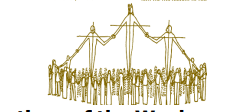
On this feast day of Christ the King, the first reading tells us of King David’s anointing as the king of Israel. He was the one who unified the twelve tribes of Israel and brought them together as a people for the first time. Ever since, he has been upheld as the preeminent king in Jewish history. Many of the misunderstandings about Jesus’ identity stem from the fact that he did not fit the description of what the Jews were expecting in a king who was the “son of David.” They expected a military warrior who would save them from the oppression of who ever the current ruling empire was. They thought he would usher in an everlasting reign of national peace. They certainly didn’t expect a king like Jesus who sided with the poor and the outcast and had no patience for social climbing. They never expected a king who would resist all manner of violence, even to the point of accepting suffering on the cross rather than lashing out in retaliation. At the heart of the celebration of Christ the King (which always falls on the last Sunday of the year before Advent begins) is an understanding of Jesus as a king who talked and acted very differently from the descendant of David whom the Jews expected. When Jesus walked the earth, Jews were looking forward to a king who would once again unify their country and liberate them from the world powers who historically oppressed them. In a world where “might makes right,” it would be natural to presume that the coming Saviour would be a powerful political figure who would lead the Jews in throwing off Roman rule and reestablishing national independence. Such a king would naturally enjoy the prestige, wealth, and trappings of a worldly kingdom. No wonder so many Jews had trouble coming to terms with Jesus’ behaviour or flatly denied that he was their expected saviour. No wonder that Jewish rulers, Roman soldiers, and a condemned criminal mocked Jesus as “the King of the Jews” at his crucifixion. Jesus rejected any nationalism that included violence or oppression, and he preached love of enemies instead of the death of enemies. His refusal to play the part of a worldly king went so far that he refused to use his divine powers to save himself from horrific suffering. Questions of the Week Give examples of worldly rulers in history who used their power and authority appropriately and for the benefit of their people. Share examples of rulers who “lorded it over others” and used their power to
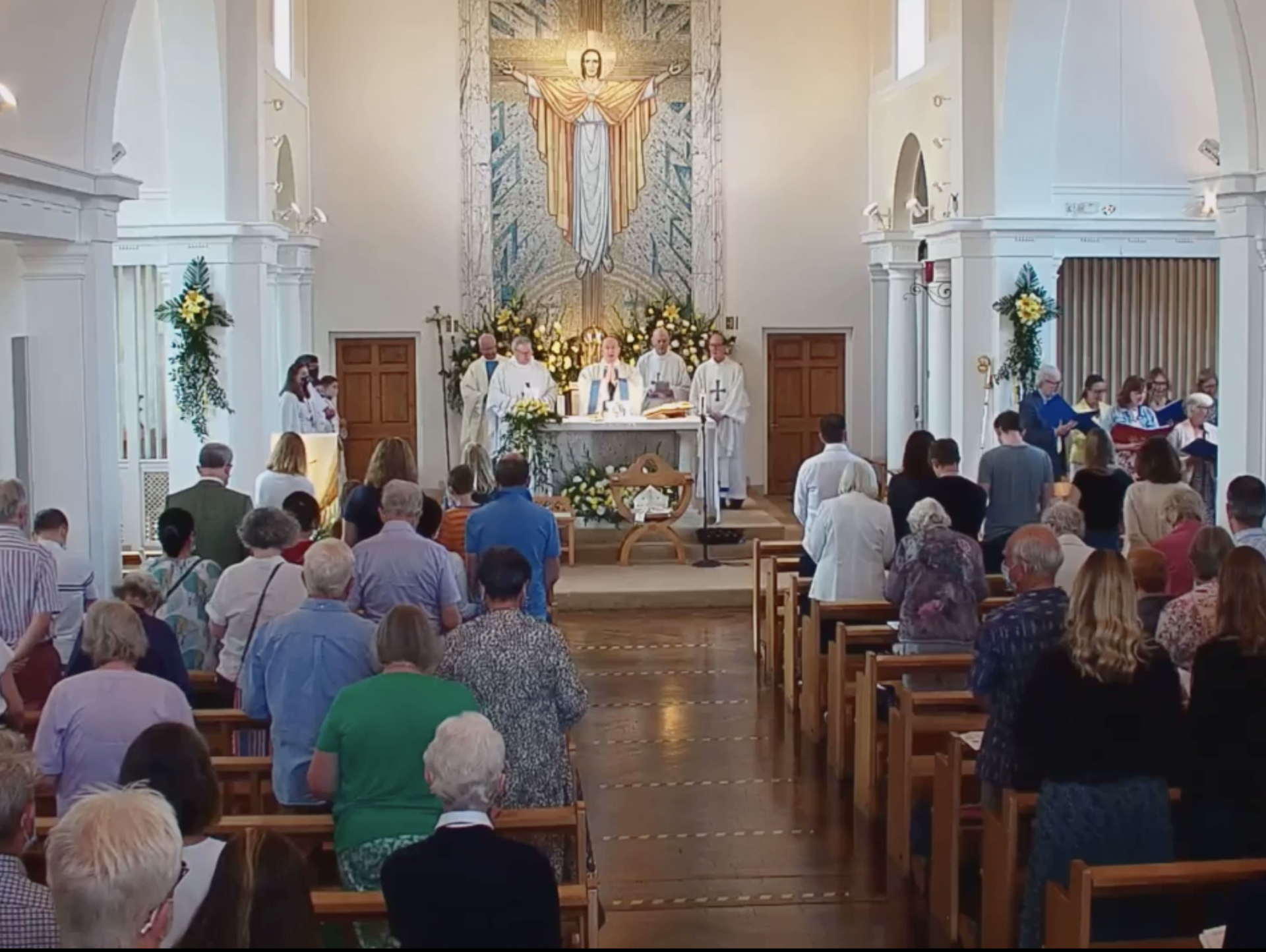
The musings of one of God’s smallest creatures on events in and around the Parish over the past seven days . . . . Lots of rushing around this week, as the roof works came to an end and various smaller electrical jobs began to be sorted out . . . . . On Monday the roof workers were completing the works with some painting of woodwork and fitting new guttering at lower levels where there was none before or where the wrong size had been fitted at some point in the past. All of the guttering is now ‘deep flow’ rather than having some shallow (which means that the water enters and flows straight out over the side and down the nearest wall!). Following Morning Prayer, Mass, and Exposition on Tuesday, Fr D was off down to the diocesan offices in Crawley where a case has arrived in his ‘in-tray’ which is ready for him to begin the process of judgement on. In the evening Fr D met with the parents of this year’s First Reconciliation candidates for their last session before the great day on Saturday 29th November. The candidates will meet with Fr D on Saturday (along with their parents) for their last session as well. After Morning Prayer and Mass on Wednesday, Fr D met with our electrician who had come to begin several minor works that Fr D had made a list of (light above main entrance to church; confessional speakers; lighting tubes in St Francis room and kitchen of Parish Centre; removal of old single pendant bulb and replacement with LED battens in the loft; additional sockets in the loft). At lunchtime Fr D was meeting with Fr Ruslan (Walton) for their monthly lunch. In the evening Fr D had a meeting with representatives of the other parishes in the deanery to further the work on the bishop’s ‘Pastoral Plan’ along with two of our parishioners. The preparations for a series of presentations in the New Year (Cobham’s Wednesday 21st January 19.30) now seem to be ready and will be informed through an opportunity in every Parish during Advent to find out how YOU can be involved as the plan progresses. Following Morning Prayer and Mass on Thursday Fr D was off to Notre Dame School to celebrate Mass for the school’s major Feast Day (the Presentation of Our Lady in the Temple in Jerusalem).

As the number of parishioners using the ‘Dona’ electronic giving machine at the rear of the church has been steadily growing, the Parish Finance Committee has decided that a second machine should be available to reduce the queuing that sometimes takes place whilst waiting to access the terminal. When the second terminal arrives we will be positioning both terminals half way down the two side aisles, this will assist access and ‘unblock the exit at the end of Masses. Of course, parishioners do not have to wait until the end of our Masses to use the terminals - after arrival and before taking seats?

Although Saint Cecilia is one of the most famous of the Roman martyrs, the familiar stories told about her are apparently not founded on authentic material. There is no trace of honour being paid her in early times. A fragmentary inscription of the late fourth century refers to a church named after her, and her feast was celebrated at least in 545. According to legend, Cecilia was a young Christian of high rank betrothed to a Roman named Valerian. Through her influence, Valerian was converted, and was martyred along with his brother. The legend about Cecilia’s death says that after being struck three times on the neck with a sword, she lived for three days, and asked the pope to convert her home into a church. Since the time of the Renaissance she has usually been portrayed with a viola or a small organ. Like any good Christian, Saint Cecilia sang in her heart, and sometimes with her voice. She has become a symbol of the Church’s conviction that good music is an integral part of the liturgy, of greater value to the Church than any other art.
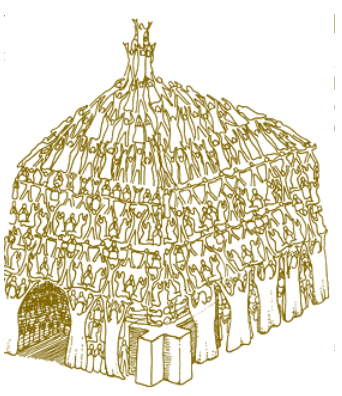
While the first reading and the Gospel connect in theme, as usual, the second reading from the Second Letter to the Thessalonians offers practical advice for any age. We can summarize Paul’s words as “Keep busy and mind your own business” as you go about doing God’s work in the world. Like other “apocalyptic” writings of the time, the first reading from Malachi offers a frightening prophecy of the end times while encouraging the faithful to remain steadfast when awaiting God’s justice. Jesus gives more dramatic imagery of the end times but also ends with a note of consolation for the listeners who may be frightened by what is to come. Throughout the Gospels, Jesus preached about the impermanence of material things: “Do not store up for yourselves treasures on earth, where moth and rust consume and where thieves break in and steal...” (Mt. 6:19). He consistently reminded his listeners, “life does not consist in the abundance of possessions” (Lk. 12:15). In today’s Gospel, Jesus addresses the crowds upon finally entering Jerusalem and its massive Temple, richly decorated and exquisitely built. The Temple building was the pride and joy of the Jewish people, but Jesus sees it from a much broader perspective. Just like every other human-made creation, the Temple will not last forever. It, too, will go the way of other material things: “there will not be left a stone upon another stone that will not be thrown down.” Not even the most magnificent building accomplishment of the people can provide ultimate security to humans. Jesus gives this speech soon before his death. Four decades later, the Temple building was burned and razed by the Romans as they put down a Jewish revolt in a four year, gruesome war. In the end, the Romans slaughtered thousands of Jews and enslaved or expelled thousands more to foreign lands. The brutal defeat of their people and the destruction of the Temple threw the Jewish people into an existential crisis. Certainly, some of those who suffered remembered Jesus’ warning of impending destruction and were able to hold out trust that what appeared to be the end of this life was not the final ending. Questions of the week When thinking of Jesus’ teachings on the lack of permanence of possessions and material wealth, what is the lesson for you that you most want to remember? How do you feel when you hear Jesus’ prophecies about the “end times”? Does anything in his words give you consolation or hope?

The musings of one of God’s smallest creatures on events in and around the Parish over the past seven days . . . . Busy week once more as workmen replacing the roof of The Presbytery removed scaffolding from the front band side of the house and moved some of it to the rear in order to work on the bay window roof and the roof over the dining room. These are more complicated roofs as they join up to the building at different levels. The majority of the works should be completed by this weekend (with perhaps some guttering to be addressed at the beginning of next week. Fr D has been delighted by the work that has been done and is glad that we decided to do it eighteen months earlier than scheduled - there were parts of the main roof that had begun to show signs of rot and the tiles on the back of the house were at the point of crumbling (but given that they were all the original tiles from the 1930’s they’ve lasted well and owed us nothing!). Fr D sincerely hopes that the new tiles will last the same ninety years (becoming someone else’s problem to deal with!). As mentioned in last week’s newsletter remote work is beginning on looking at the next aspects of necessary works (church lighting system and the heating system for the church), research has begun on both these projects with a view to working out the ‘what’ and the ‘when.’ On Tuesday Fr D met with the rest of the deanery clergy, at Our Lady and St Peter’s, Leatherhead, for their regular monthly meeting. Increasingly most of the agenda is taken up with the Bishop’s Pastoral Plan and how this will be put into effect in our area. During Advent there will be postcards given out in each of the present parishes which parishioners will be asked to complete ready for presentations/questions to be asked at a meeting in each parish to be held in the first two months of 2026. Two teams of clergy/laity have been meeting throughout the Autumn working on the Bishop’s plan in our area; it is hoped that these will for the basis of a Parish Leadership Team and a Parish Finance Committee for the new larger Parish of several communities together. In the evening Fr D gain met with parents of our Reconciliation candidates to look at the work that the children will be doing with their parents on Saturday - this was the penultimate session ready to celebrate First Reconciliation on Saturday 29th November.
